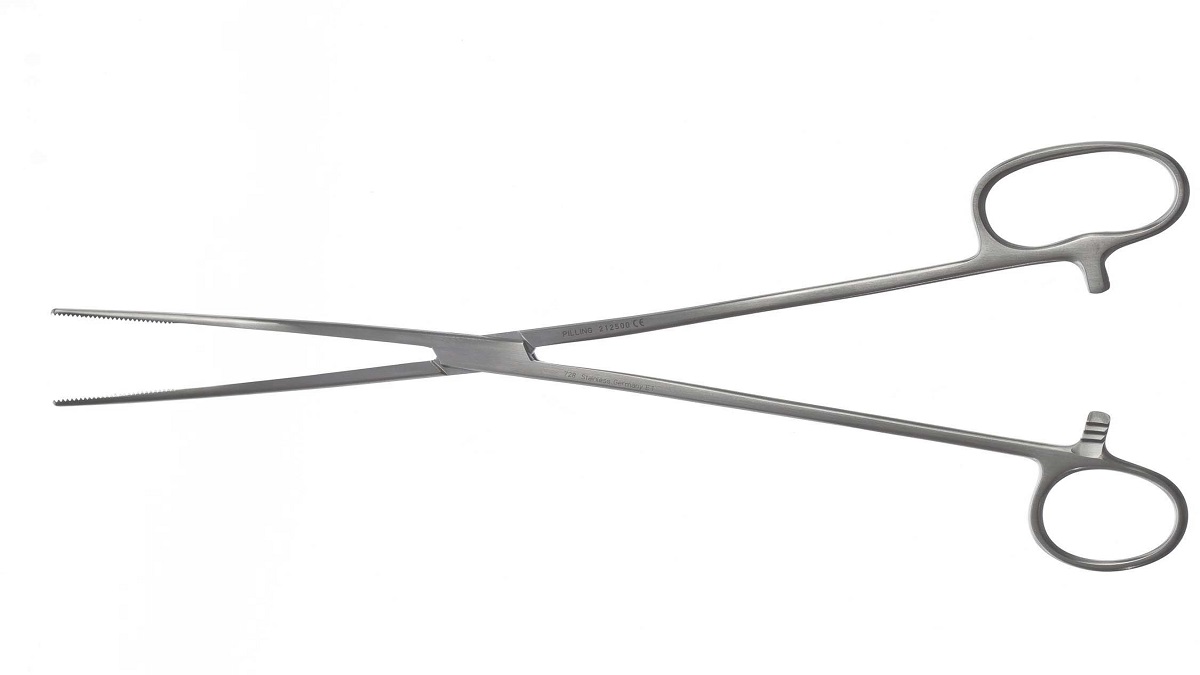The first thing that comes to mind when discussing Hemostatic Forceps procedures such as orthopedic, vaginal delivery, or organ transplantation is which surgical instruments the surgeon will use. The answer is that doctors and surgeons both require specialized equipment to perform general or complex operations. They need more than one surgical instrument to perform successful surgeries, and hemostatic and hemostat forceps are essential tools. Some surgeries may not be possible without these instruments. Let’s look at the similarities, differences, and features of these two instruments.
Hemostatic Forceps
Because these Hemostatic Forceps resemble ring scissors, they are also known as ring forceps. It has a ratchet that aids in the clamping process. These are useful in surgical procedures for clamping or grasping. When performing the most delicate or complicated operations, surgeons prefer ring forceps over thumb forceps. Because they provide a firm and easy grip without causing finger or forearm fatigue or stress.
Hemostats Forceps
These aid in the regulation of blood flow. They aid in the compression of blood vessels and the obstruction of the flow of blood or other bodily fluids. Hemostat forceps are available in a variety of designs and shapes, including right-angled, straight, and curved. They are also useful for dissecting fine tissues and holding small sutures.
What Are the Key Differences Between Forceps and Hemostats?
Hemostatic Forceps are used in surgeries to clamp or grasp tissues or organs, whereas hemostats are used to control the flow of blood and body fluids. Forceps, like tweezers, are also somewhat similar to scissors. The majority of the forceps have rigged tips, but some also have smooth tips with tight grips. The forceps are typically made of stainless steel and come in a variety of designs such as curved, angled, or straight. Each forceps type is designed for specific human body areas, assisting physicians and surgeons in surgical procedures. The hemostat is essentially a type of forceps, but it is not used for cutting.
Hemostatic Forceps Types
The following are some examples of notable Hemostatic Forceps:
Forceps Adson
This Hemostatic Forceps aid in the handling, clamping, and holding of tissues during the skin closure process. These are locking forceps that also perform hemostasis functions. It has a wide thumb grasp, which provides a firm grip. This instrument provides control, accuracy, and precision during various operations. These forceps are used for a variety of tasks, including:
- Adson forceps are used to hold dressing materials such as medical gauze or cotton.
- It is useful in the manipulation of soft tissues.
Forceps for Artery Undermining
It is one of the most important types of Hemostatic Forceps, and its applications include:
- It aids in the control of blood flow during skin or tissue retraction.
- Holding the tissues blocks the path of blood and fluid flow and aids in the closure of blood vessels.
- It provides a firm grip and control over blood vessels without damaging them.
- It is lightweight and made of long-lasting materials.
- These can be autoclaved and sterilized.
Crile Forceps
Non-toothed clamps are used in atraumatic surgical procedures. These differ from Kelly hemostats in that they only have serrated jaws, whereas Kelly hemostats have half-serrated jaws and are used for different procedures. It has several notable applications, including:
- These forceps aid in the clamping of blood vessels.
- It supports the tissues and blood vessels during the laparotomy procedure.
- It has razor-sharp blades that ensure precision during surgical procedures.
Dangerous Forceps
Dandy Hemostatic Forceps are another type of hemostatic forceps that can be used to control bleeding and blood waste during surgical procedures. It has serrated jaws and is curved from the side. The followings are the features and applications:
- It has a firm grip and relieves stress and strain on the forearms and thumb.
- These forceps are reusable after sterilization and autoclaving.
- These are made of high-quality German Stainless Steel, ensuring productivity and efficiency while working.
Is there a distinction between hemostats and Kelly’s forceps?
Kelly forceps are a type of hemostat forceps that aid in the holding or grasping of tissues. It has blunt ends and a strong grip.
Which hemostat is the best?
Curved hemostats, as opposed to straight ones, can reach deeper tissues in the body. It enables surgeons to grasp veins and arteries without causing damage to them.
Last Thoughts
Now that you understand the differences and types of Hemostatic Forceps, you will understand their importance in various procedures. The question now is where you can get high-quality, precise, and accurate forceps for your clinic. If you have the same question, there is no need to look elsewhere because GerMedUSA Inc. manufactures and supplies all of the necessary surgical equipment at competitive prices.



